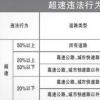Each of the following conversational fragments is
Each of the following conversational fragments is to some degree odd.To what extent can the oddness be explained by reference to Grice’s CP and maxims? 下面的对话多少都有点问题,请问多大程度上,这些问题能用格赖斯的合作原则及其准则加以解释? (1)A.Have you seen Peter today? B.Well.if I didn’t deny seeing him I wouldn’t be telling a lie. (2)A.Are you there? B.No.I’m here. (3)A.Thank you for your help,you’ve been most kind. B.Yes,I have. (4)A.Can you tell me where Mr.Smith’s office is? B.Yes,not here. (5)A.Would you like some coffee? B.Mary’s a beautiful dancer. (6)A.Has the postman been here? B.He leant his bicycle against the fence,opened the gate,strode briskly down the path,stopped to stroke the cat,reached into his bag,pulled out a bundle of letters and pushed them through our letter box.
请帮忙给出正确答案和分析,谢谢!
参考解答
正确答案:Without a proper contextthese conversations can all be regarded as jokes resulting from the exploitation of Grice’s CP and maxims.In(1)Speaker B uses a long and prolix way to express the meaning of“YesI have”thus violating the Manner maxim of“be brief(avoid prolixity)”.(2B)results from the exploitation of Quality maxim in that Speaker B seems to be telling the truth while deliberately misinterpreting speaker A’s“there”.(3B)is another instance of exploiting the Quality maxim.Though logically speaking it may be true that Speaker B has been helpful to Awe don’t usually respond to others’thanks in this way.On one hand(4B)is still another instance of exploiting the Quality maxim in that Mr.Smith’s office is really“not here”.On the other handSpeaker B has violated the Quantity maxim of being as informative as is required since A needs more specific information than“not here”.(5B)is an indirect way of declining the offer.In terms of Grice’s maximsthis is a case of not being relevant.In the last conversationSpeaker B uses a long and prolix way for the simple answer“Yeshe has”and has thus violated the Manner maxim of“be brief(avoid prolixity)”.在没有合适上下文的情况下这些对话都可以被看成是在利用格赖斯的合作 原则及其准则开玩笑。 在第一个对话里说话人B用了一个冗长、繁琐的方式表达了“YesI have”(是 的我看见他了)的意思。他违反了“要简练”(避免冗长)这条方式准则。 在第二个对话里说话人B利用了质量准则表面上看起来他是在说实话实际上他故意曲解了A的“there”的意思。第三个对话里的(3B)是另一个利用质量准则的例子。从逻辑上讲说话人B可能真的对A做出了很大的帮助但是我们一般不这样回应别人的感谢。从一个角度上说(4B)又是一个利用质量准则的例子。史密斯先生的办公室真的“not here”(不在这里)。但是从另一个角度说说话人B违反了数量准则他没有提供足够充分的信息量。说话人A需要的不仅仅是“nothere”他需要更具体的信息。(5B)是对说话人A的提议的一种间接拒绝。从格赖斯准则的角度说说话人B违反了“要有关联”这个准则。在最后一个对话里说话人B用了一个冗长、繁琐的方式表达了一个简单的意思——“Yeshe has”(是的他来过了)因而违反了“要简练(避免冗长)”这条方式准则。
Withoutapropercontext,theseconversationscanallberegardedasjokesresultingfromtheexploitationofGrice’sCPandmaxims.In(1)SpeakerBusesalongandprolixwaytoexpressthemeaningof“Yes,Ihave”,thusviolatingtheMannermaximof“bebrief(avoidprolixity)”.(2B)resultsfromtheexploitationofQualitymaximinthatSpeakerBseemstobetellingthetruthwhiledeliberatelymisinterpretingspeakerA’s“there”.(3B)isanotherinstanceofexploitingtheQualitymaxim.ThoughlogicallyspeakingitmaybetruethatSpeakerBhasbeenhelpfultoA,wedon’tusuallyrespondtoothers’thanksinthisway.Ononehand,(4B)isstillanotherinstanceofexploitingtheQualitymaximinthatMr.Smith’sofficeisreally“nothere”.Ontheotherhand,SpeakerBhasviolatedtheQuantitymaximofbeingasinformativeasisrequiredsinceAneedsmorespecificinformationthan“nothere”.(5B)isanindirectwayofdecliningtheoffer.IntermsofGrice’smaxims,thisisacaseofnotbeingrelevant.Inthelastconversation,SpeakerBusesalongandprolixwayforthesimpleanswer“Yes,hehas”,andhasthusviolatedtheMannermaximof“bebrief(avoidprolixity)”.在没有合适上下文的情况下,这些对话都可以被看成是在利用格赖斯的合作原则及其准则开玩笑。在第一个对话里,说话人B用了一个冗长、繁琐的方式表达了“Yes,Ihave”(是的,我看见他了)的意思。他违反了“要简练”(避免冗长)这条方式准则。在第二个对话里,说话人B利用了质量准则,表面上看起来他是在说实话,实际上他故意曲解了A的“there”的意思。第三个对话里的(3B)是另一个利用质量准则的例子。从逻辑上讲,说话人B可能真的对A做出了很大的帮助,但是我们一般不这样回应别人的感谢。从一个角度上说,(4B)又是一个利用质量准则的例子。史密斯先生的办公室真的“nothere”(不在这里)。但是,从另一个角度说,说话人B违反了数量准则,他没有提供足够充分的信息量。说话人A需要的不仅仅是“nothere”,他需要更具体的信息。(5B)是对说话人A的提议的一种间接拒绝。从格赖斯准则的角度说,说话人B违反了“要有关联”这个准则。在最后一个对话里,说话人B用了一个冗长、繁琐的方式表达了一个简单的意思——“Yes,hehas”(是的,他来过了),因而违反了“要简练(避免冗长)”这条方式准则。
相似问题
How do you compare focuses as intended among synta
How do you compare focuses as intended among syntax,semantics and pragmatics? 你怎样比较句法学、语义学、语用学之间的关注点?请帮忙给出正确答案和分析,谢谢!
Can you explain the main characteristics of subjec
Can you explain the main characteristics of subjects in English? 能否解释英语中主语的主要特征?请帮忙给出正确答案和分析,谢谢!
文学文化学可以说是一种最古老而又最新的文学理论形态。此题为判断题(对 错)。请帮忙给出正确答案和分析
文学文化学可以说是一种最古老而又最新的文学理论形态。此题为判断题(对,错)。请帮忙给出正确答案和分析,谢谢!
What does morphology study? 词态学研究的是什么?请帮忙给出正确答案和分析
What does morphology study? 词态学研究的是什么?请帮忙给出正确答案和分析,谢谢!
Determine the original term from which the followi
Determine the original term from which the following words were backformed. 确定下列逆构词最初的形式。 (a)asset (b)burgle (c)ent












